Recent Water Damage Posts
5 Reasons for Toilet Overflow
3/1/2022 (Permalink)
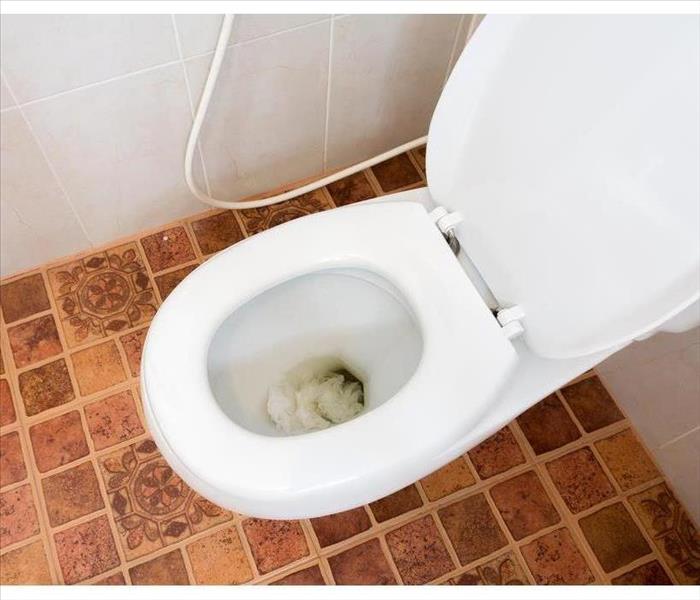 Avoid flushing toilet paper into your toilet.
Avoid flushing toilet paper into your toilet.
Five Causes a Toilet To Overflow
A toilet overflow and sewer damage in a commercial building in Whitemarsh, PA, is everything else but fun. It gets even worse if it’s a recurring problem that you have no explanation for. If you have a flooded toilet, it’s best to reach out to a sewage company that specializes in commercial restoration soonest so your business can get back to normal. Here are five situations that can cause a toilet to overflow.
1. Clogged Drain Line
This is probably the most common reason for toilet overflow, and it is oftentimes associated with the line that connects the toilet to the main exterior line. However, it’s also possible that other lines are responsible for this. That’s why it’s recommended to have an expert assess the situation.
2. Sewer Issue
A flooded toilet can also be related to the sewer lines. It’s not unheard of that lines that run from the building to the main sewer line get clogged with foreign materials and objects. Even tree roots can block or damage pipes.
3. Septic Issues
Is your commercial property on a septic system? In this case, the tank can be full or unable to absorb any more water, which can lead to sewer damage.
4. Low-Flow Toilet
Chances are your toilets see a lot of usages and they might not be able to handle what they are being asked to do. Especially older low-flow toilets are known to be troublesome as they are not as strong and durable as their modern counterparts. You might not be able to control what type of non-flushable items or the amount of toilet paper people are trying to flush.
5. Blocked Trap
The trap between the base or bowl of the toilet and the drain pipe can get clogged up with foreign objects and even too much toilet paper. This can cause a water backup.
These are some of the most common reasons for toilet overflow. A sewage company can find the issue and clean up the sewer damage in your commercial building.
Assessing Damage From an Overflowing Toilet
2/8/2022 (Permalink)
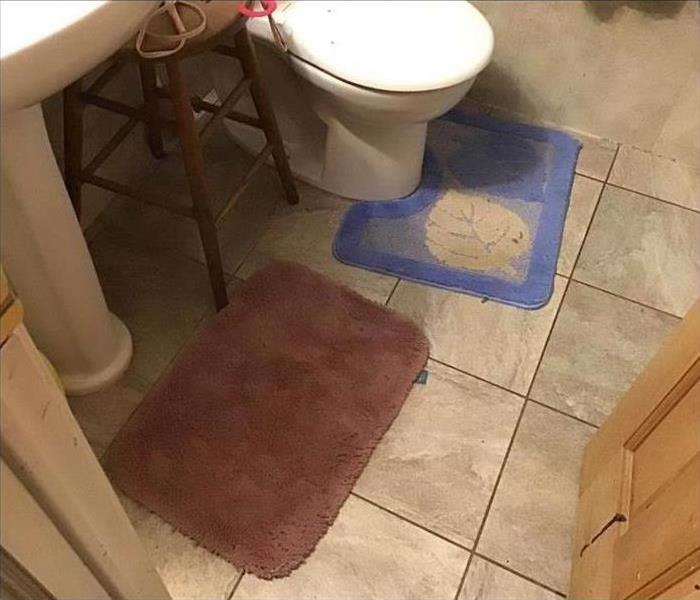 Whitemarsh/Cheltenham offers sewage cleanup services in Wyndmoor, PA.
Whitemarsh/Cheltenham offers sewage cleanup services in Wyndmoor, PA.
Counting the Costs of a Toilet Overflow
Water damage from an overflowing toilet is fairly common. Toilets are a necessary part of life, but they can create quite a mess. They can get clogged. Septic tanks stop draining properly. A flooded toilet is always bad news, and sewer damage due to an overflowing toilet or a backflow of sewage in Wyndmoor, PA, needs to be dealt with immediately.
Stopping the Overflow
When you notice your bathroom is flooding, you need to shut off the water. The toilet shut-off valve is usually located behind the commode. Don’t attempt to flush the toilet until you discover the cause of the problem.
Clean up as much of the water as you can. In most cases, you need to call a sewage company to fix the problem. Backups can be caused by clogs, septic tank backups or excessive rain. A professional can ascertain the cause of your sewage issues and come up with a solution.
Dealing With Sewage
Much of the time, an overflowing toilet can cause sewer damage. The water coming out of the bowl may be considered gray or black water. These categories need to be dealt with differently because they contain contaminants that could make you sick.
You need specialized equipment to sanitize the area. Professionals have decontamination suits and the proper tools to deal with the situation. Regular household cleaners are inadequate to kill the bacteria associated with sewage.
Surveying the Damage
Certain types of flooring are more susceptible to damage. In some cases, your flooring may need to be replaced. If the flooding occurred on a second story, you could have leakage in between the floors. Depending on the level of water damage, you may need to dry the area extensively to ensure no mold grows. Dispose of as much as possible if the cause of the overflow was sewer damage.
An overflowing toilet can be a big headache. Don’t risk it if you are dealing with potentially contaminated water. Consult a sewage damage professional to get the job done right.
Flooding Basement? Follow These Steps
11/23/2021 (Permalink)
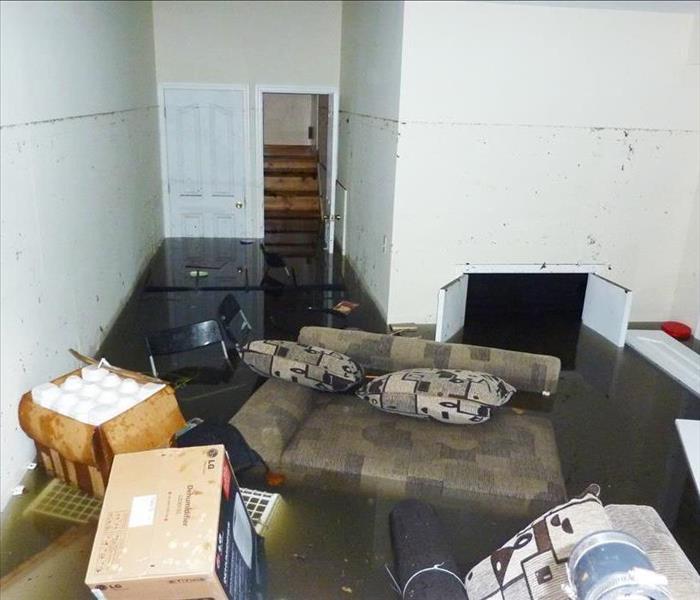 Flooded basement in Whitemarsh, PA.
Flooded basement in Whitemarsh, PA.
Flooding Basement? Follow These Steps
As a homeowner, one of your biggest nightmares is to discover a flood in your Whitemarsh, PA, house. Of all the places in your home where you might find flooding, the basement could be the most common. Knowing how water can enter your home and get into the basement can help you prevent water damage. If your best efforts still can't hold back the water, make sure you call a professional company to clean up.
Clear the Area
Once you discover a basement flood move any items in or near the water to higher ground. Don't turn on any electronics. It may be helpful to unplug them. However, if black water is in your basement, do not get near it for these reasons:
- Black water contains hazardous materials such as feces and silt.
- You could become ill if you come into contact with black water.
- Black water can be lethal if ingested.
Get the Right People on the Case
If the flooding is minor, you may be able to use a wet vac to extract water. For more widespread floods, you should hire a water cleanup specialists. Professionals not only have the experience you can rely on, but they also possess the necessary tools and equipment to effectively clean the area. Technicians are accustomed removing floodwater, regardless of how the flood started.
Removal, Drying and Disinfecting
The team will first extract standing water in your basement as well as water that saturated carpet or furniture. Once there is no more water, the crew will thoroughly dry the area with dehumidifiers and dryers. Lastly, technicians will sanitize the floors, walls and other affected materials.
Restoration
Once the crew has cleaned the basement, it's time to replace any items that were damaged. Pipe repair may be necessary, and the team may have to replace flooring and drywall.
Your basement doesn't have to be a loss after flooding. Call in the pros to make the area look as good as new.
Salvaging a Flooded Company: How to Ensure Your Employees Are Protected during the Cleanup Process
9/27/2021 (Permalink)
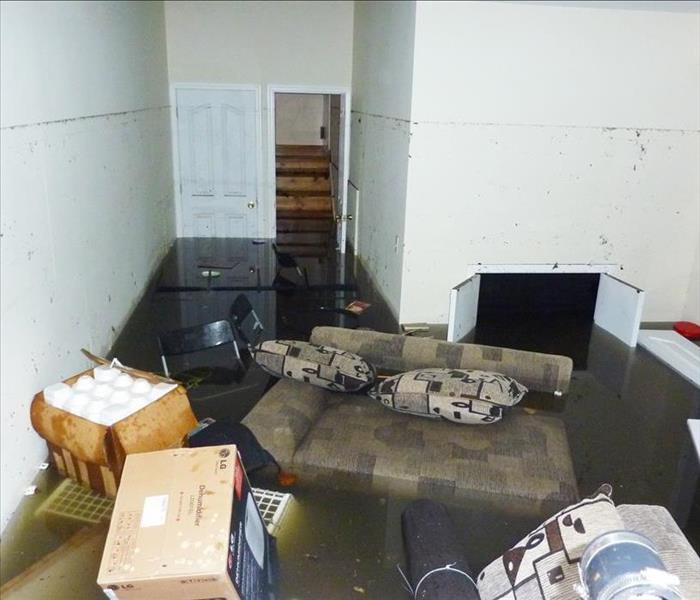 A flooded company, while devastating, can provide opportunities for team building.
A flooded company, while devastating, can provide opportunities for team building.
A flooded company is a devastating thing that can stem from a broken pipe or a flood in the Germantown, PA, area. When this type of disaster occurs, it can be second nature to want to begin the cleanup process immediately with all hands on deck; however, there are certain precautions that you may want to take to protect the health and well-being of your employees.
1. Enforce Hygiene Practices
Standard practice when cleaning up any water damage should be the washing of hands before eating or touching your face. Depending on the type of water damage, you may be working in a contaminated space that can pose health risks just from contact.
2. Enforce PPE Requirements
As to avoid any further health risks, workers should wear Personal Protective Equipment (PPE). This equipment includes facemasks, waterproof gloves, rubber boots, goggles, and water-repellent coveralls.
3. Enforce Vaccination Requirements
In addition to any protective clothing, employees should be up-to-date on their tetanus shots as well as hepatitis A and B vaccines. You can speak to an emergency manager to find out if there are any other vaccinations required.
4. Ensure Appropriate Training
Before entering a flooded company, you may want to provide employees with the appropriate training necessary for the particular damage they will encounter. This training should cover the above requirements and practices, ensuring that everyone is aware of their risks and responsibilities.
5. Call in the Calvary
Depending on the level of damage and the significance of the health risks, it may be beneficial for a company to pursue restoration specialists with the appropriate certifications, training, and experience to protect their employees and their business. While a burst pipe may result in a small flood, corrected with wet vacs and a dry cleaning delivery, that is simple enough for an in-house team to handle, large floods may require more skilled hands.
A flooded company, while devastating, can provide opportunities for team building; however, it is essential to prepare employees for the cleanup process by ensuring they abide by the appropriate requirements, practices, and training. Their safety is your ultimate responsibility.
Dealing With Water Damage: Know What To Expect
8/19/2021 (Permalink)
 If your home suffers from water damage, call SERVPRO immediately!
If your home suffers from water damage, call SERVPRO immediately!
Knowing What To Expect When Dealing With Water Damage
Dealing with water damage in the home can be a frustrating and time-consuming process, if you don’t know what you’re doing. Fortunately, the professional water cleanup team in Whitemarsh, PA, has several tricks it can employ to make the recovery process easy, quick and hassle free. Whether your problem stems from bursting pipes or a severe flood, here is what you can expect from professional cleanup efforts:
- The process should take as little as three to five days to complete, though it can take as long as 10 days.
- Mold growth begins as little as 24 hours after water damage occurs, which is why it is so important to start remediation efforts ASAP.
- Some of your items may not be salvageable, so be prepared to throw some belongings out.
- Your insurance may or may not cover the damage, so speak with your insurance representative as soon as damage occurs to get an idea of cost.
Duration of Cleanup
How long your home takes to cleanup really all depends on two factors:
- Cause.
- Materials used in your home.
If bursting pipes were the cause of your damage, cleanup may be easier and less time consuming. However, if your home was flooded with black water, cleanup could take exponentially longer. If the damaged area of the home had tile or cement floors, cleanup should take just a few days. However, if your floors are wood, it could take as many as 10.
Mold Prevention
Your Whitemarsh, PA, cleanup crew may focus on mold prevention first and foremost. This may include cleaning up, sanitizing and drying out the area.
Recovery
Depending on the extent of damage, you may or may not have to replace several of your belongings. Talk to your insurance company about what is covered and what is not. Some insurance companies may cover the cost of cleanup but not belongings or vice versa, while others may only cover the cost to fix broken pipes. Know what your policy covers so you can plan accordingly
Whether the damage to your home was caused by bursting pipes or a flood, it’s nice to know what to expect. Talk to your local water restoration company to learn more.
How To Replace a Toilet
6/22/2021 (Permalink)
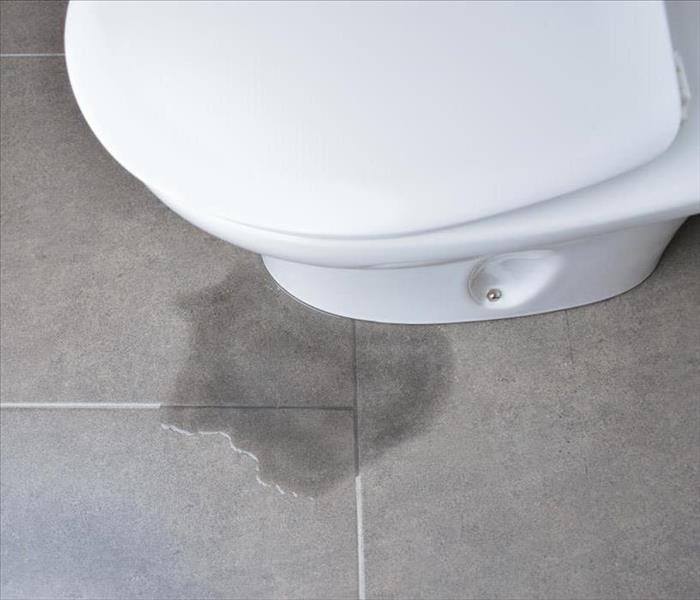 No one wants to deal with a leaking toilet.
No one wants to deal with a leaking toilet.
How To Replace a Toilet
If you have a leaking toilet in your Cheltenham, PA, home, you need to start making repairs as soon as the problem presents itself. Sometimes repairs are not enough to keep water from building up in your house. When this is the case, you may want to replace the toilet. Replacement can help you avoid major damage that would require you to work with a professional water remediation team.
1. Turn off the water. Before you can replace the old toilet, you need to get the field ready for work. This means turning off the water that goes to the toilet by twisting the shutoff valve. You may need to temporarily turn off the water to your entire house. If you skip this step, the liquid can spray into your bathroom.
2. Drain the water. Once you know no more water will be introduced to the toilet, you need to remove any that still remains. Flushing the handle allows you to drain extra water from the fixture, which can reduce the overall mess of the project.
3. Disconnect the supplies. Disconnecting the water supply hose will free the leaking toilet from its surroundings. Your plumber can help you make sure all the hoses are properly disconnected.
4. Remove the fixture. The next step is to take the entire toilet out of your bathroom. The cleanup professionals can help you carry the heavy, awkward fixture out of the house.
5. Install the new toilet. The final step in this toilet repair is to put in the new fixture. Because you want to make sure the installation is done correctly, you should turn to a plumber. This professional can help you hook up the supply lines to avoid a leaking problem in the future.
No one wants to deal with a leaking toilet. Doing a replacement can help ensure you don't have to hassle with standing water in your bathroom in the future.
Everything You Should Know About Water Damage
3/3/2021 (Permalink)
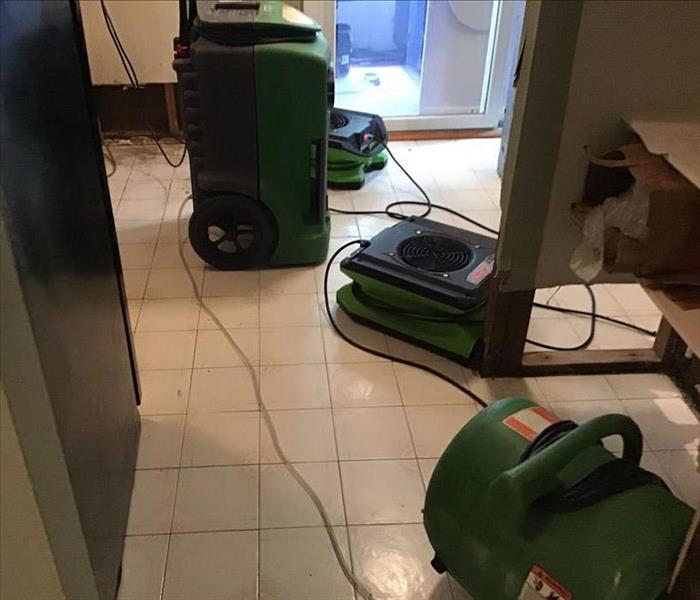 Water damage restoration in a Plymouth Meeting, PA home.
Water damage restoration in a Plymouth Meeting, PA home.
A pipe burst, a rooftop leak or a flooded basement are stressful situations, especially if you are a new homeowner in Plymouth Meeting, PA. Water damage can devastate your home and your belongings if you do not act fast and appropriately. Prepare for these situations by learning more about them, including potential damage causes, the cleaning process, and the restoration of the affected area.
Water Damage Causes
Your house can be damaged by a variety of water-related incidents. As you look for the culprit behind the damage, consider the following causes:
- Leaking/broken water line and pipes;
- Natural disasters (thunderstorms, tornadoes, etc.)
- Firefight aftermath;
- Sewage backups
- Malfunctioning bathtubs, sinks and toilets
- Leaking water appliances;
If possible, repair the source or hire an expert to fix it immediately. Record any information so you can provide it to your insurance company and water damage repair technicians. Consider these likely incidents as you enact preventative measures.
Cleaning Process
Once the pipe burst or leak is controlled, the remediation crew will inspect the damage, remove the water and dry every impacted surface. After those steps are complete, they will move on to cleaning the location. Any water damage, from leaks to flooding, carries some degree of contamination. The professionals guarantee your household's safety by eliminating as many germs as possible. They might use antimicrobial, antibacterial or disinfectant treatments as needed.
Final Restoration
After the damaged area is completely sanitized, the crew will start the restoration process. This service can be as minor as repainting walls, repairing wet drywall and installing new carpet. It can also be as extensive as rebuilding entire sections of the building. The employees will try to repair contents as much as possible to keep your expenses low. They will only replace when the material has been damaged beyond salvation.
Disasters that cause water damage such as a flood, a broken appliance and a pipe burst can be overwhelming, especially if it is your first time dealing with them. Learn everything you can to anticipate these specific circumstances.
5 Ways To Prevent Frozen Pipes
2/10/2021 (Permalink)
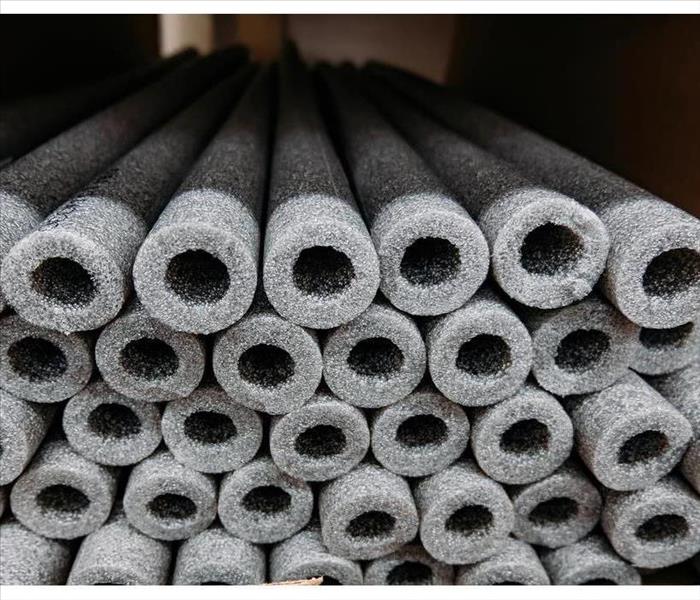 Insulate your pipes.
Insulate your pipes.
Here Are Some Ways You Can Prepare
The snow and holidays of winter can make it a fun season for many, but it can be less so for business owners with unprepared plumbing. Indeed, freezing temperatures are often a leading cause of broken pipes. For this reason, you should take steps now to make sure your commercial property is ready for the cold season. If you want to reduce the chances of needing the help of a water damage remediation expert, consider the following ways you can prepare.
1. Keep the Water On
Even if it might cost you more with energy bills this winter, spending the extra money can be worth it. By keeping some faucets turned on, you can allow water to continuously flow. This can prevent lines from freezing.
2. Turn Up the Thermostat
In order to keep pipes warm, you need to keep the building warm. Even when you are not open, make sure you keep the thermostat set above 55 degrees Fahrenheit.
3. Close the Doors and Windows
Another way to minimize your risk of expensive water cleanup is by ensuring you close doors and windows. This includes any basement or garage doors as well. If there is anywhere frigid air can seep in, it can lead to one of the most common causes of frozen pipes which often results in water damage.
4. Open Backroom Storage and Cabinets
While you are closing your doors, you may want to open backroom storage and cabinets that surround plumbing. Doing this can allow warm building air to find its way into the enclosures.
5. Insulate Your Pipes
One of the most straightforward ways you can prevent freezing of your pipes is by making sure you insulate them well. A good way to do this is by installing heat tape. You can ask a professional if you need assistance.
When it comes to preventing frozen pipes and the subsequent water damage that can come with them, there are several things you can do. With a little planning, you can rest easy knowing your business is ready for the winter.
5 Ways To Prevent Water Damage
1/12/2021 (Permalink)
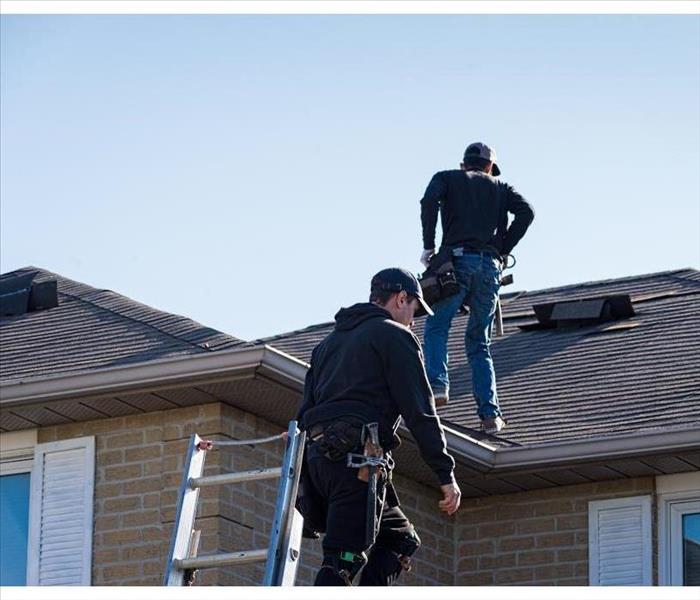 Inspect your roof
Inspect your roof
Prevent Water Damage In Your Home
It is not uncommon to have damage from water in your home in Lafayette Hill, PA, but it can be costly. Taking the time to keep your house and plumbing well-maintained reduces the likelihood of dealing with frustrating pipe cleanup.
1. Check for Leaks
Inspect the areas around pipes for signs of moisture:
- Stains on the ceiling
- Dark spots inside sink cabinets
- Dripping faucets
- Leaking around the base of toilets
- Discoloration on windowsills
2. Locate Your Shut-Off Valves
Make sure you know how to shut off the water in case of an emergency. Locate the following shut-off areas:
- Inline valves to your sinks and toilets
- Valves to turn off the water to your washing machine or dishwasher
- Hot water shut-off for your water heater
- The main water line valve
Turning off the water can prevent additional damage. Test the valves routinely to ensure they are working. If flooding does occur, call a professional water restoration service to get your house back to its best.
3. Inspect Your Roof
Routinely check the roof and insulation for discoloration or other water damage signs. Inspect recessed lighting in the attic for rust or stains indicating moisture. Repair loose, missing or worn-out shingles and moisture barriers as needed to prevent water in your home.
4. Clean Your Gutters
Clean your gutters twice per year. If you live around many trees, you may want to clear them out more often. If gutters are clogged by leaves, nests, and debris, rainwater runs down the side of your house. This poor drainage causes damage to the siding and the foundation, creating pathways for moisture to flow inside.
5. Prevent Pipe Damage
Protect your pipes from freezing in cold weather. Install a leak detection system to alert you to a possible broken pipe or low temperatures. Taking measures to avert damage is easier to deal with than pipe cleanup from burst lines.
Sometimes, issues from water in your home are inevitable. However, with regular home maintenance checks and repairs, you can often prevent costly flooding situations.
What if You Find a Leak Under Your Sink?
12/26/2020 (Permalink)
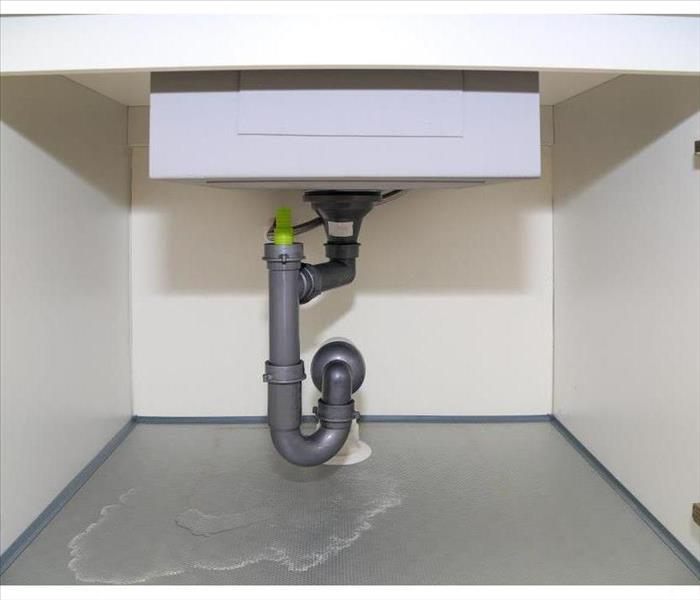 Fixing the leak should be the key priority now
Fixing the leak should be the key priority now
A hidden water leak is potentially a dire situation in Wyncote, PA. It can give the water time to cause severe damage, seeping behind barriers and gradually warping absorbent construction materials. It also can cause hidden flooding.
A leak under a sink often falls into this category. You need to be attentive for the symptoms and act quickly once the problem is discovered.
What Are the Signs?
Some sinks are above cabinets you may regularly access, but others may not be accessed for months (or longer). If you open the cabinet and see that it’s wet, you need to act immediately. Other signs are more subtle, including
- Musty or moldy odor
- Warped wood
- Yellow, green or black mold growth
- Stains or discoloration
- Peeling paint or warped wallpaper
A common way the problem is discovered is a strong moldy odor when the cabinet door is opened. That’s a sure sign of water in home areas it doesn’t belong.
What Should You Do First?
Immediately locate the nearest water shutoff valve and close it. Even if there’s no flooding, a reoccurring drip can cause mass damage over time.
If there’s a shutoff valve in the cabinet and the leak is stopped by it, you can take that sink offline while still having water in your house. That gives you time to consider your options.
What Next?
Fixing the leak should be the key priority now. Whether it’s a bathroom issue or a significant kitchen repair, a licensed plumber and water damage restoration technician should perform an inspection to determine if there’s hidden water damage.
Water damage is insidious and can be a long-term problem. It attracts wood-boring insects, such as termites, and it needs to be removed. If the leak caused flooding, there will be extensive damage, possibly even including structural issues.
In some cases, insurance will cover much of the costs of restoration, assuming you found the leak in a reasonable time. However, if you know about a leak and do nothing about it, that can seriously prejudice your claim.
Water and Electricity: A Volatile Mix
10/7/2020 (Permalink)
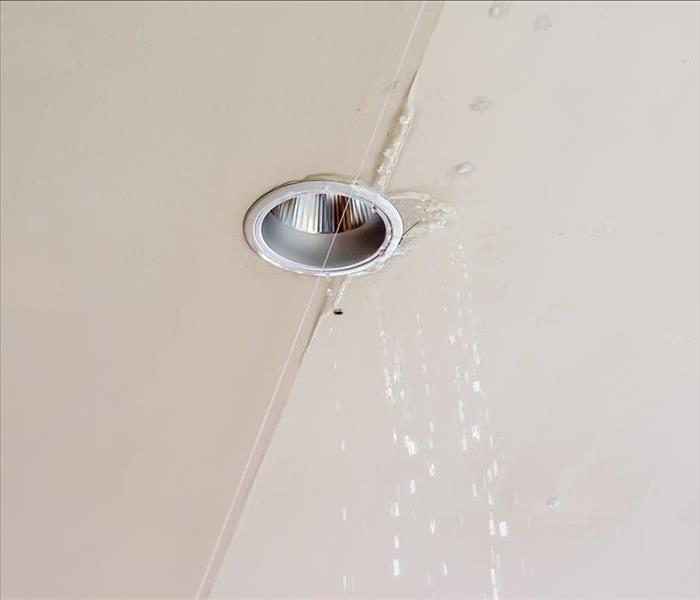 Water in light fixtures presents threats other than electrocution
Water in light fixtures presents threats other than electrocution
Occasional water leaks are part of homeownership in Lafayette Hill, PA. Faucets, pipes, and toilets drip and overflow from time to time. However, there's one category of water leakage that's not only stressful but highly dangerous—water in light fixtures such as a chandelier. It not only results in ceiling damage but, importantly, it can cause a serious or deadly injury to you or someone in your home.
The reason? Water conducts electricity. It carries an electrical current, making electrocution a real possibility if you touch leaking water that's pooling around an electric light fixture. In fact, merely touching the fixture's light switch can give you an electric shock.
This water emergency demands quick action.
Here's A Safety To-Do List
Turn off the electricity in your home's breaker box.
Ensure the electricity is off by testing a dry electric light, preferably with a non-contact voltage tester.
Turn off your home's water supply at the main shut-off valve.
If damp, don't touch any of your home's electrical sources (or light switches).
Avoid wet or sagging ceiling bulges around the affected light fixture.
Block access to the water-affected room.
Do not attempt to fix the ceiling's water leak by yourself.
Water in light fixtures presents threats other than electrocution. It's a fire risk because—as the water infiltrates the fixture's electrical wiring—it can cause sparking that ignites into flames. Corrosion or mold may have developed over the course of the leak, damaging wires and creating unsafe short circuits. There's also the possibility of a ceiling collapse as the drywall around the light fixture softens and loses its structural strength.
Once initial safety checks are in place, it's time to call in professionals skilled in neutralizing the hazards surrounding water in light fittings. Contact an electrician to repair the leak source as well as a water damage company experienced in cleaning and restoring your home's affected areas.
Why Does My Toilet Leak Every Time I Flush?
9/24/2020 (Permalink)
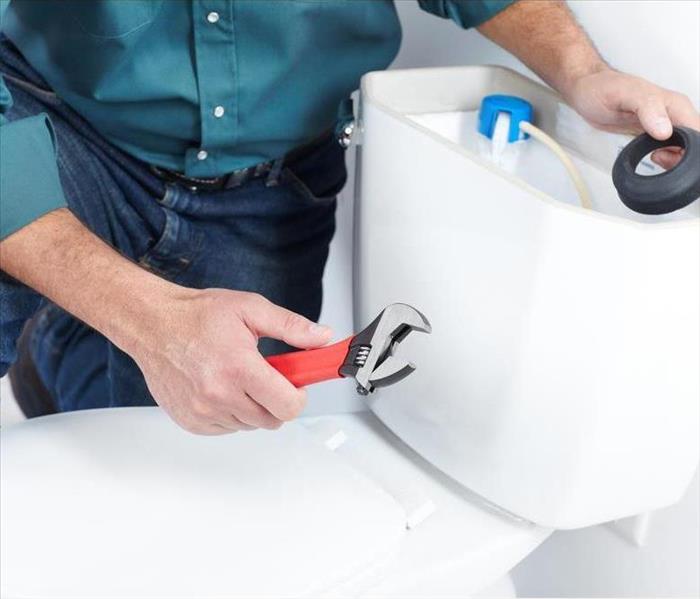 Leaking toilets will become an issue at some point during your homeownership.
Leaking toilets will become an issue at some point during your homeownership.
Experiencing plumbing problems is an issue every homeowner in Whitemarsh, PA, will have to contend with every now and then. Consider it to be your house letting you know something needs your attention. When it's a leaking toilet giving you signs something is wrong, you'll want to attend to it fast to avoid serious damage to the structure of your home.
When Your Toilet Is Leaking
One of the most common problems of an aging toilet is to experience water leaking at the base. While this may seem like a catastrophe, it really isn't as long as you take fast action to correct the issue.
It's likely the dry wax ring around the base of the toilet has failed. To make sure the issue isn't coming from the tank, clean up the water around the base of the toilet, and flush the toilet again. When a new puddle begins to form, inspect to see where the water is coming from.
Fixing Your Leaking Toilet
Bathroom leaks aren't difficult to diagnose. If the leak was coming from under the toilet, try tightening the bolts that hold the toilet to the floor. You don't want to tighten them too much, though, or you could damage the base.
If that doesn't help, replace the wax ring beneath the toilet. To do this, you'll have to turn off the water using the shutoff valve behind the toilet.
1. Once the water is off, flush the toilet to completely empty the tank.
2. Disconnect the water-supply tube.
3. Rock the toilet to break the seal.
4. Moe the toilet to the side.
5. Remove the old wax gasket.
6. Inspect your flange to make sure yet isn't broken.
7. Replace the wax ring and install a new flange if it was an issue.
If you discover the leak had been occurring for some time, call a restoration company to inspect the area around the toilet to ensure your structure is stable and doesn't require further repair.
If you aren't comfortable with repair work, call a plumber. Leaking toilets will become an issue at some point during your homeownership. Catching a problem early and correcting it can save you money.
How To Stop a Continuously Flushing Toilet
8/21/2020 (Permalink)
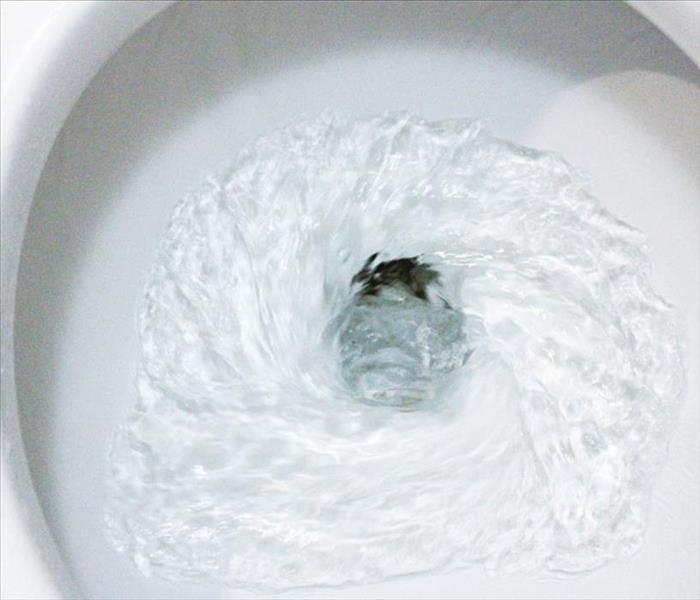 A malfunctioning flushometer may also continuously flush, driving up the cost of your water bill
A malfunctioning flushometer may also continuously flush, driving up the cost of your water bill
While flushometers usually work quite well, a toilet overflow can still occur. A malfunctioning flushometer may also continuously flush, driving up the cost of your water bill.
You may not need to call a plumber to deal with this issue. As long as you have some handyman skills, you can stop a constantly flushing toilet on your own.
Stopping a Toilet With a Manual Flushometer
You only need some basic tools to fix a manual flushometer. Start by grabbing the following:
- Flat screwdriver
- Wrench
- Cleaning products
There should be a slot on the side of the flushometer. Put the screwdriver in there and turn the tool to shut off the water. This way, you will not have to deal with a toilet overflow while you fix the flushometer.
Next, use a wrench to screw off the flushometer's top lid. You can then remove the flange cover to reveal a gasket. Take the gasket out of the flushometer and wash out the sediment. Be sure to clean the weep hole, as well.
Finally, put the gasket back into the flushometer and restore the flange cover and lid. Do not forget to turn back on the water before trying to use the toilet.
Stopping a Toilet With an Automatic Flushometer
If your flushometer flushes automatically, try holding down the chrome button after you turn off the water. If you hear clicks within two seconds of each other, you need to remove the top of the flushometer and clean the diaphragm kit. You may also want to make sure the solenoid is properly tightened.
The above steps should help you stop a toilet that keeps flushing. Yet your toilet may still develop problems even after you fix the flushometer. For instance, a clog could cause a toilet overflow. If this happens to your property, you should not attempt to clean up the toilet flood on your own. Instead, you should utilize emergency restoration professionals in Plymouth Meeting, PA.
The 3 Types of Flood Water
8/5/2020 (Permalink)
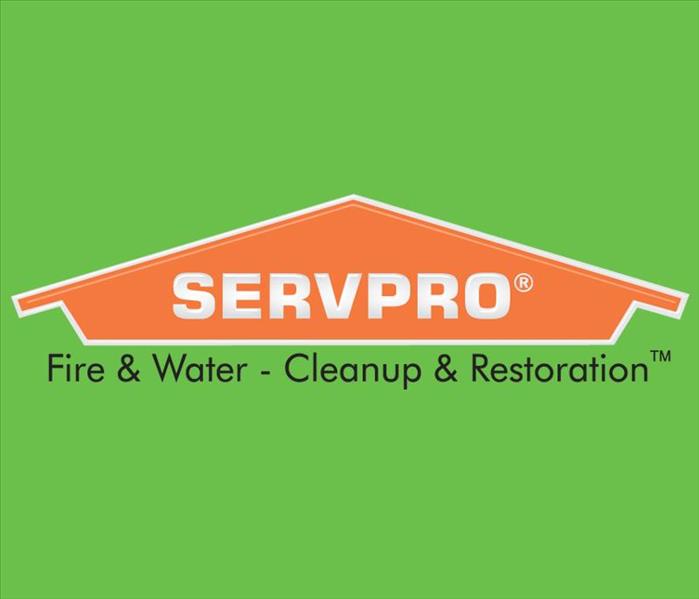 While all floods can cause problems, Category 3 flood water is, by far, the most dangerous type of contamination.
While all floods can cause problems, Category 3 flood water is, by far, the most dangerous type of contamination.
Flooding is one of the biggest headaches for homeowners today. They always pose an issue, but the type of floodwater present can make a big difference in how the situation needs to be handled. Arm yourself with knowledge and protect your home in Whitemarsh, PA, from all types of overflow.
Types of Water
Flood water is categorized by the contaminants present in the overflow. There are three major types, each more dangerous than the last:
Category 1: This is the safest type of water on the list. It is completely sanitary and does not pose a threat to humans or animals if consumed. That being said, you should never attempt to drink any type of water in a flood. If this water comes into contact with contaminants, it can transform into one of the other two types on this list.
Category 2: Category 2 damage is not completely sanitary, but it's also not the most dangerous type of water. It usually originates from a dirty dishwasher or water that was used in a washing machine.
Category 3: This is the most dangerous type of water contamination. Category 3 water is more commonly referred to as blackwater or sewage. It can result from a toilet overflow, sewage backflow or some other type of dangerous spillage. It is an extreme biohazard and should never be handled alone. Instead, you should contact professional assistance.
Category 3 Water Damage
It's natural to want to immediately rush in and save your possessions when faced with a Category 3 flood. You should never attempt to interact with blackwater yourself, especially without proper protective gear. Taking the proper protective measures prior to a major flood is the most effective way to defend your property. Move all-important possessions and documents to high shelves on the top floor of your house.
While all floods can cause problems, Category 3 flood water is, by far, the most dangerous type of contamination. Because of the dangerous biohazards present, you should never attempt to handle the situation yourself. Instead, contact flood remediation experts if faced with dangerous levels of blackwater.
How To Spot a Leaky Shower
6/4/2020 (Permalink)
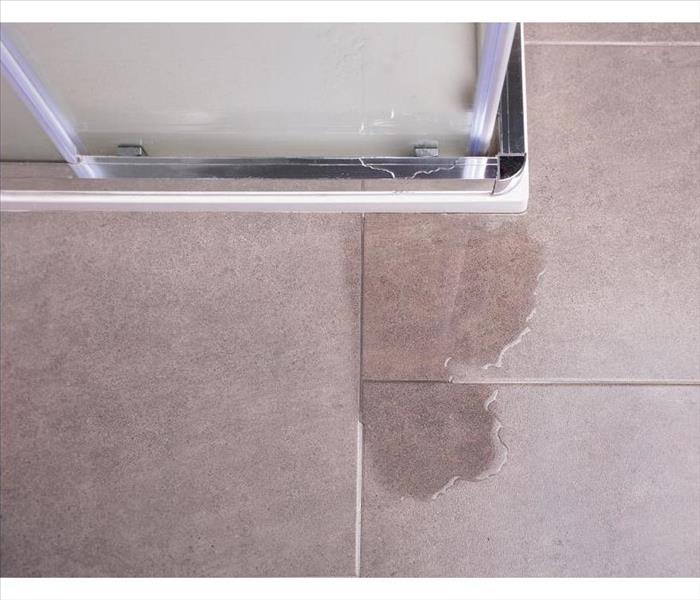 A shower or bathtub leak isn’t something to mess around with
A shower or bathtub leak isn’t something to mess around with
Dealing with a water leak, especially in a bathroom, can cost you a lot of money in water damage repairs. If you suspect that your home in Cheltenham, PA has a shower or bathtub leak, there are some telltale signs to watch out for.
How To Spot a Bathroom Leak
Visible mold or mildew - If you see any mold growing around the tub, you likely have a bathtub leak. Similarly, mold in the grout of shower tiles will indicate a shower pan leak or a leaky faucet.
Musty smell - Sometimes mold is easier to locate by the smell since it gives off a strong, unpleasant odor. If you can’t see it, but can smell it, chances are that the leak is extensive.
Damage to walls - Shower walls begin to warp or bow when a leak is present. The walls can also become stained. Water leaks can also cause wallpaper to blister or start peeling away from the wall.
Damage to flooring - If the bathroom floor starts to show signs of staining or cracking, you can bet you have a leak somewhere in your bathroom.
How To Handle the Leak
Once you have determined that you have a leak, you should contact a plumber right away. A trained professional will know how to pinpoint the exact source of the leak. If you don’t employ a knowledgeable expert to accurately locate where the problem originated, you won’t solve the problem, and it will wind up costing you a lot more money down the road.
If you see or smell mold, it is also important to contact a mold remediation expert to assess the situation. If mold isn’t handled quickly and professionally, it can cause serious damage to your home.
A shower or bathtub leak isn’t something to mess around with. The quicker you have it examined, the easier it will be to fix the problem.
Understanding the Causes of Common Water Heater Noises
5/26/2020 (Permalink)
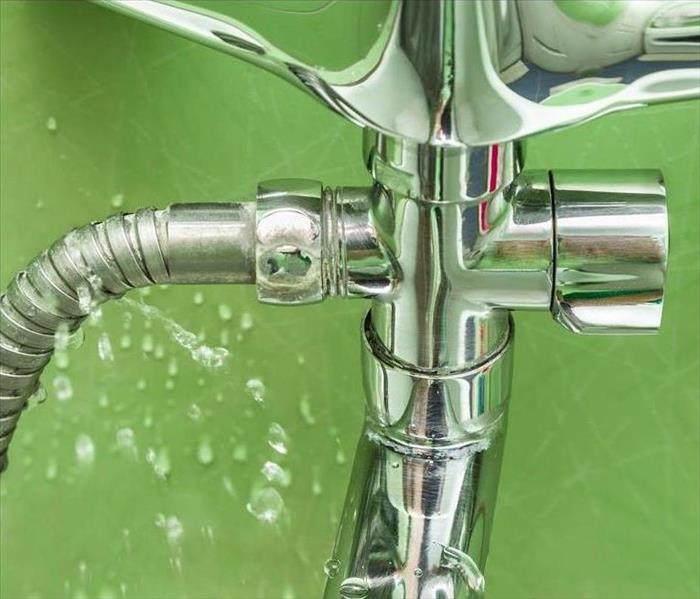 When turning on faucets or showers, have you been startled by a screeching or screaming sound?
When turning on faucets or showers, have you been startled by a screeching or screaming sound?
Every home has a water heater, and the majority have tanks. Most water mitigation companies in Cheltenham, PA, will tell you that tanks can create a lot of noise. While all the noises from these essential appliances don't automatically mean a problem is imminent, being aware of the potentially hazardous sounds is necessary.
Rumbling
Knocking
Humming
Screeching
Ticking
Rumbling
If you have an older unit, you may hear rumbling or popping sounds emanating from the heater. The noises often relate to sediment buildup around the element tubes. You can resolve most of the rumbling noises by performing a water heater flush. However, as these noises often occur in older units, you may want a replacement instead.
Knocking
Knocking sounds likely to relate to loose pipes. When water shuts off abruptly, the force causes the pipes to rattle and knock together or against the wall. The knocking is harmless to your water tank, but if left unchecked, you may end up with pipe and wall damage.
Humming
Humming often occurs in electric water tanks. The heating element in these tanks is vertical. As water moves around the component, it can cause vibrations, which sound like humming from outside the tank. By tightening the heating component, you can eliminate or prevent the hum in your water heater.
Screeching
When turning on faucets or showers, have you been startled by a screeching or screaming sound? When a system forces water through small openings, it can cause unpleasant high pitch noises. In most cases, the noise results from a partially open valve. Check and make sure that all valves are completely open.
Ticking
Ticking or tapping sounds are common in water tanks. The check valve or heat trap ensures that hot water flows in the correct direction, which may cause these odd and unnerving sounds. Replacing the heat trap with a dielectric nipple may eliminate the noise.
Every water heater makes noise. Knowing the difference between each sound is crucial for determining appliance needs and repair.
The Consequences of Water Damage During Construction
5/10/2020 (Permalink)
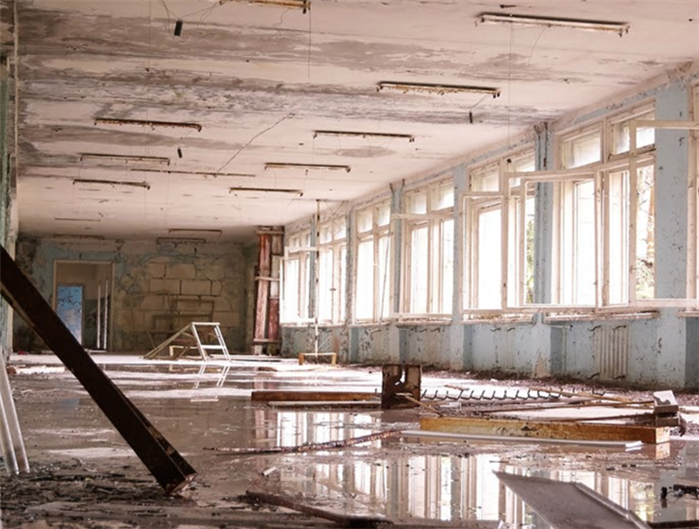 Water damage in a Lafayette Hill, PA
Water damage in a Lafayette Hill, PA
Consequences of Water Damage During Construction
Water damage during construction has a direct effect on building materials. Best practices for site management may prevent many potential causes of damage. Any incidents that occur must first be addressed, such as through water pipe repair, and damage mitigated and restored. Find out more about the consequences of water damage during construction and ways to minimize lasting effects.
Additional Costs
Water damage from any source can rack up the cost of a construction project. Pre-planning should account for a variety of risks:
- Broken pipe
- Exterior plumbing problems
- Rain backup
- Runoff
Water may enter a construction site from any of these sources. The amount and level of contamination will determine the additional cost of cleanup and restoration.
Structural Damage
Incomplete planning or a lack of water leak detection systems may allow problems to go unnoticed or unresolved until a structure has sustained damage. It is essential that exposure does not undermine the integrity of building materials. Piping systems should be tested with air pressure to identify leaks prior to charging with water. Following proper installation procedures may prevent the need for immediate water pipe repair.
Delayed Completion
The time it takes to extract water and dry a construction site can delay a project by days or weeks. Minor water damage that only affects a portion of a structure may cause less of an interruption than a flooded building. Proper site planning and quality assurance and control measures can help to limit damage and get a project back on track as soon as possible.
Although water damage mitigation and cleanup will disrupt the progress of a construction project, these measures can prevent problems down the line. Construction company and commercial property owners should consult with restoration experts about the best way to handle damage cleanup in the wake of water pipe repair or other damage on a construction site in Lafayette Hill, PA.
The Dangers of Flooding From Sprinklers
4/22/2020 (Permalink)
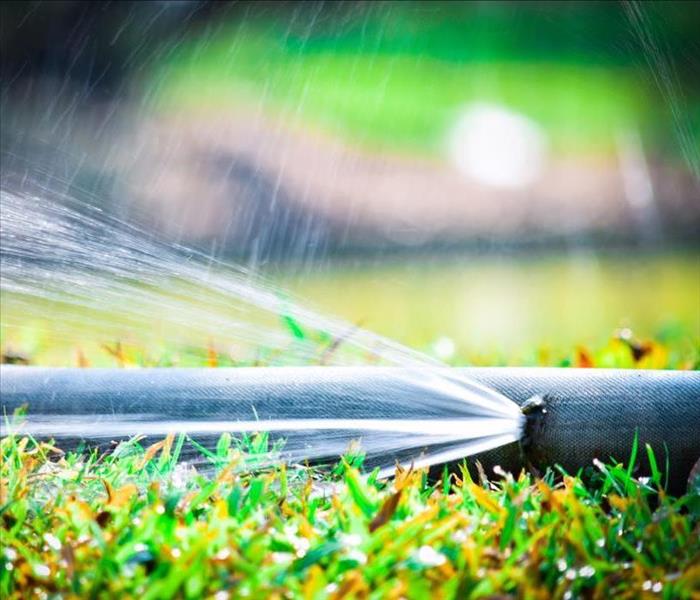 Seen in this light, irrigation maintenance protects a company from possible flooding and the headaches that follow.
Seen in this light, irrigation maintenance protects a company from possible flooding and the headaches that follow.
Landscaped grounds in front of a commercial property in Cheltenham, PA, look good and reflect well on the company. It is all part of a positive brand image. For best results, an irrigation and watering system is needed to keep the flowers blooming and the grass green. With this, though, comes the necessity of regular irrigation maintenance. The hallmarks of an effective maintenance program include the following steps:
Inspection of sprinkler heads, nozzles valves, and pipes
Replacement of worn or faulty components
Communication with the contractor
Adaptation to the changing seasons
Properly maintained, a good system will beautify grounds and lower water usage. Poor maintenance could lead to sprinkler flooding.
Results of Poor Maintenance
For the most part, an irrigation system operates on its own and turns on and off on a programmed schedule. With a bit of irrigation maintenance, this should continue throughout the seasons. Occasionally, though, sprinkler heads break and continue to spray water for hours. This excess spray could harm the landscaping, but if it is near a building it could also seep into the property. Failure to blow out sprinkler lines in the cold months could result in water lines that freeze and then burst. If not discovered quickly, large amounts of water could harm a building, necessitating the need for a qualified water mitigation company.
Effects of Water Damage
Excess water in a building can result in a number of harmful effects. It could saturate walls and insulation and moisten contents such as clothing, furniture, and documents. The longer the damages go untreated, the greater the harm and the more expensive the cleanup. The corrosive power of water has the power to break down materials such as wood and fabric over time. A high level of moisture in a building can lead to mold growth.
Seen in this light, irrigation maintenance protects a company from possible flooding and the headaches that follow.
5 Things To Do Before an Adjuster Arrives
3/5/2020 (Permalink)
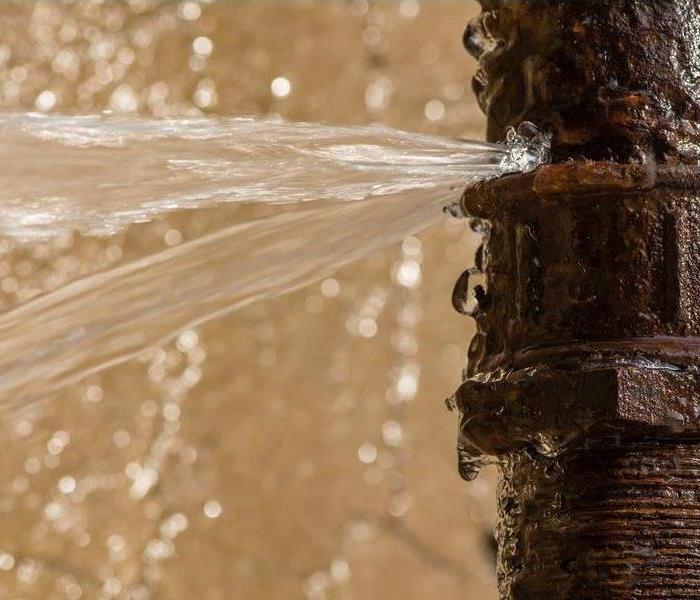 Complete some leg work before the home adjuster inspection. This could help expedite the process and make settlement easier.
Complete some leg work before the home adjuster inspection. This could help expedite the process and make settlement easier.
If you've experienced water damage, you probably called your insurance company in Whitemarsh, PA, requesting to file a claim. This isn't always a quick and simple process, however. Before a check is cut and approval is given, a home adjuster needs to visit the location, determining the extent of the problem. Be prepared. Use the following four tips to make the survey smoother.
1. Read Your Policy
You shouldn't rely on the insurer to tell you how they can help. Instead, before you take any steps, read over your paperwork. Know the deductibles, and be very aware of what is and isn't covered. Have a printed version available, and be prepared to use it as validity for your claims.
2. Take Pictures
As you walk through the premises, snap photos on your phone or with a camera. If possible, have a time stamp on them. In addition, gather former pictures you've taken from before the trouble. This comparison helps authenticate the insurance claim. Keep in mind that you may have compensation for personal items. Therefore, before you toss something in the trash can, shoot a picture of its destruction.
3. Have Inspections
Know what is wrong before they come. It's best to get a few outside quotes and tests, looking for what you may not see. For example, have an electrician look over the place, ensuring that everything is okay. In addition, request an overview from a water restoration company. Keep a copy of all of the estimates and issues to show the home adjuster.
4. Compile a List
Take your information, and write it out. This should include an inventory list for your lost belongings as well as the need for repairs. Mark how much it should cost to purchase replacements. When the adjuster arrives, use this as a guide for your walkthrough, pointing out anything that is not noticed.
5. Save Receipts
Documentation is vital to retrieving what you deserve. If you bought something or paid for a service, keep the receipt.
Complete some leg work before the home adjuster inspection. This could help expedite the process and make settlement easier.
What You Need To Know About Sewer Cleanup (Just in Case)
2/18/2020 (Permalink)
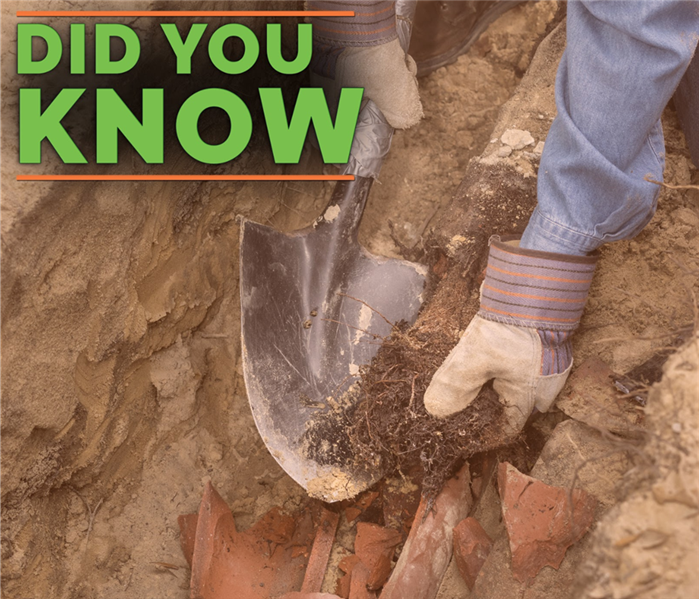 Tree roots are a common villain
Tree roots are a common villain
Here's What You Need To Know About Sewer Cleanup In Your Home
Without warning, a sewer backup can mire your Cheltenham, PA residence in foul-smelling, highly damaging, raw sewage. A flooded toilet can soak floors, walls and possessions with water, if not something worse. With any luck, you'll never have to deal with these headaches, but knowledge is power. Here's what you need to know about sewer cleanup in your home – just in case.
Damage Control
Recovery involves more than pumping out the nasty stuff. Full restoration may include steps such as the following:
- Salvaging damaged possessions
- Repairing areas where mold might grow
- Steam cleaning upholstery or carpets
- Clearing the air with special equipment
The Root of the Problem
Sewer backup is caused by blockage. This can happen anywhere along the pipes that carry sewage away from your home. Tree roots are a common villain. Thirsty roots find their way through tiny cracks or joints in the sewer pipes. In this environment, root systems grow quickly. They can dam the flow of sewage, or even completely clog a sewer pipe.
The obstruction might not be on your property. A hidden problem down the alley or across the street might back the sewage up until it spills out in your basement. A toilet overflow can also be caused by a malfunction in the toilet or the plumbing system.
Coverage Concerns
A thorough sewer cleanup can be a major expense. Not all homeowners or renters insurance policies cover damage from sewer backup or toilet overflow. Some insurance companies charge an additional premium for this service. Your insurance agent may be able to recommend a restoration company that is Faster to Any Size Disaster. Due to the nature of the problem, enlisting experienced pros is often the only completely safe way to handle black water.
Getting Back to Normal
Dealing with sewer cleanup can be a traumatizing event. Knowing ahead of time what you need to do to restore your home quickly and safely can remove a great deal of stress from the process.
When Is a Basement Flood Covered by Insurance?
2/9/2020 (Permalink)
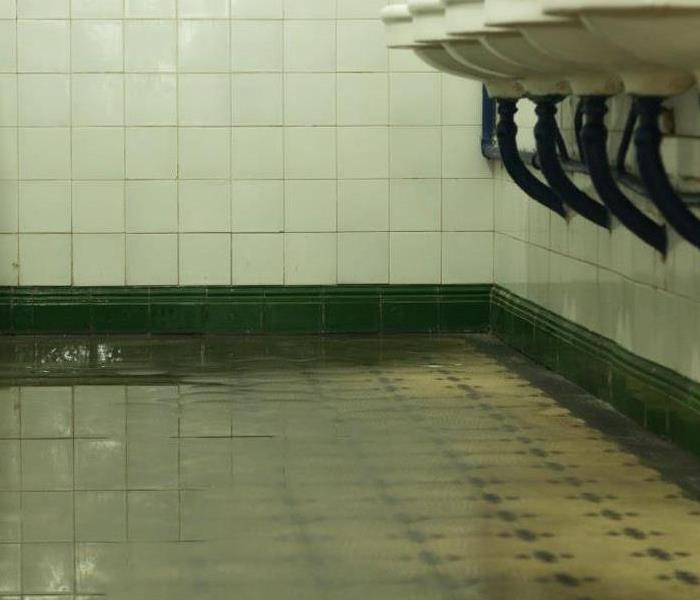 A basement flood may not be covered by your regular insurance policy.
A basement flood may not be covered by your regular insurance policy.
There is nothing worse than coming home to a basement flood after a long day. You may look at all the damage to your Whitemarsh, PA, house and wonder how you are going to pay for repairs.
Your insurance provider can help. However, a flooded basement is not always covered by insurance. Specifically, your insurer won't pay for repairs caused by any of the following:
Flooding
Unresolved maintenance
Outside drain or sewer
What Is Not Covered
If the provider determines that the flood resulted from a leak that you failed to address, your insurance claim will be denied. A homeowner's policy does not cover floods caused by over-saturation, surging bodies of water or major storms, either. The policy also won't pay for damages that result from water backing up into the basement through an outside sewer or drain.
However, you can purchase separate flood insurance from the National Flood Insurance Program. You can also buy sewer coverage as part of your homeowner's policy.
Your insurer won't cover the cause of the basement flood, either. If a washing machine or pipe leak led to the water damage, you will have to pay to repair or replace that item yourself.
What Is Covered
Homeowners insurance typically will pay for water damage to a home that results from an accidental or sudden event. Your policy likely contains both dwelling and personal property insurance coverage. Dwelling coverage deals with damage to the structure of your home, such as the walls and roof. Personal property coverage, meanwhile, pays for repairs to your belongings.
Your insurance may not reimburse you for everything, though. You likely have a deductible that you have to reach before the insurance money comes. Your policy may also have limits.
A basement flood may not be covered by your regular insurance policy. However, if you get additional flood insurance, you should get reimbursement from your provider. You can then use this money to pay for water damage repair services.
How Frozen Pipes Create Water Damage In Your Business
1/31/2020 (Permalink)
 Your business is vulnerable to not just obvious winter hazards, but also water damage caused by frozen pipes
Your business is vulnerable to not just obvious winter hazards, but also water damage caused by frozen pipes
The winter season brings many obstacles and hazards to your business, from slippery ice to heavy snow accumulation. A more unexpected danger involves water damage caused by pipes bursting and leaking their contents. These pipes usually break because they freeze after exposure to cold temperatures. Continue reading to learn more about what happens after pipes freeze, how to handle damage and preventing future frozen pipes.
Consequences of Frozen Pipes
When the water inside pipes freezes and expands, it creates high pressure that tries to escape in all directions. The pressure is strong enough to damage the pipes as it leaves. The frozen water can later melt and leak from the broken pipes to the rest of the Cheltenham, PA, building. This high amount of water can damage your property, slow down productivity and drive away clients. Ultimately, you will have to deal with the costs caused by frozen pipes.
Dealing With Damage from Burst Pipes
Once you detect the signs of water damage, such as weakened structures and mold stains, it is time to take action. Follow these steps to minimize the impact and save your establishment.
Observe the affected area and disable any potential hazards, if possible
Turn off the main water valve and turn on faucets to drain remaining water
Place buckets and containers to collect leaking water
Contact a plumber for repairs and an emergency remediation company for water cleanup
Fast action and preparation can mitigate damage and save money. Keep a contact list of important services at hand.
Preventing Frozen Pipes
The best way to handle winter damage is by preventing it. There are several measures you can enact to keep the pipes from freezing. Have your building inspected for openings that can leak cold air and seal them. During the warmer seasons, insulate the pipes to prevent exposure to freezing temperatures. Finally, let your faucets drip warm water to prevent internal freezing.
Your business is vulnerable to not just obvious winter hazards, but also water damage caused by frozen pipes. You can reduce this loss and even prevent it by learning more about it.
How To Deal with Leaking Bathroom Supply Lines
1/20/2020 (Permalink)
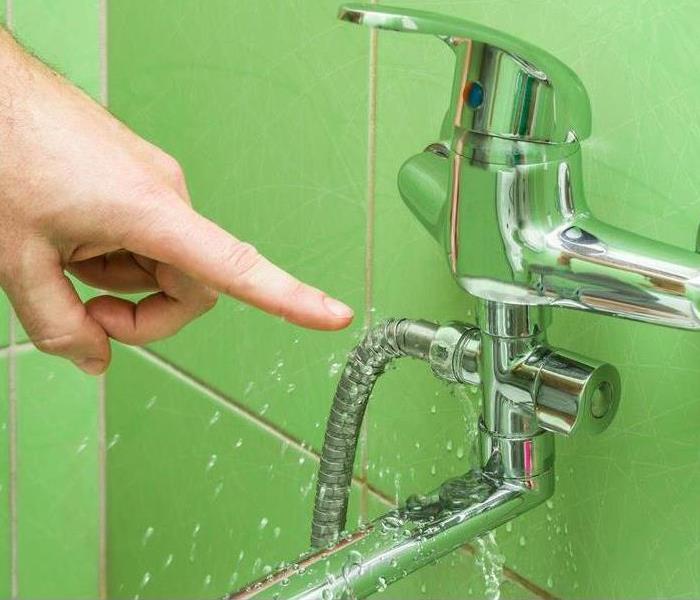 Knowing when to change your supply lines can keep you from dealing with costly leaks.
Knowing when to change your supply lines can keep you from dealing with costly leaks.
The supply lines in your home play the important job of providing water to fixtures and appliances such as sinks, washing machines, or toilets. One of the main causes of a bathroom leak is supply line damage, which can often be prevented by replacing broken lines before they cause water damage. Use this guide if you are running into issues with your bathroom’s water supply lines or plan on replacing them soon.
Replacing Supply Lines
If you notice a supply line leak, you should immediately have the affected supply lines replaced. Problems to look out for include:
Pooling water
Dripping on walls
Rust
Corroded piping
Punctures or cracking
You should also replace supply lines if you are making renovations and installing a new faucet or toilet or if your supply lines are old and outdated.
Addressing Water Damage
It is not uncommon for large leaks to happen unexpectedly and result in extensive water damage. If this happens to you, turn off your water supply and contact a water damage restoration company in Whitemarsh, PA, right away to avoid any further issues.
Choosing New Supply Lines
There are several different materials to choose from when buying new supply lines including plastic, copper, and braided stainless steel. While plastic is often the cheapest choice, it is the most prone to supply line damage. Copper is a more durable material, but you will need to watch out for signs of electrolysis, or galvanic metal corrosion. Many people opt for braided steel supply lines, which are considered a more durable choice and often have a lifetime warranty. However, even these types of supply lines can run into issues and should be examined for signs of deterioration or leaking.
Knowing when to change your supply lines can keep you from dealing with costly leaks. Always contact a professional if you are unsure which type of material is best for your needs or need help identifying common signs of supply line damage.
Frozen Pipes!
12/27/2018 (Permalink)
4 Signs of Frozen Pipes
With the weather continually dropping, frozen pipes become a concern that all homeowners should be aware of. Aside from the lack of running water, frozen pipes are dangerous because of their potential to burst. If they do burst it will create a larger ,more dangerous problem. Here are four signs that your pipes may have frozen:
- Low Temperature: Obviously the weather must drop low enough for water to freeze. When the temperature drops below 32 degrees Fahrenheit is when you should start to take precautions to avoid freezing pipes.
- Frost on the Pipes: This one may seem obvious as well but you should always be checking your pipes when it gets colder.
- No Water is Coming Out of the Faucet: If the water from your faucet is running low, just dripping or is completely dry then your pipes may be frozen.
- Strange Smells: When a pipe is frozen there is nowhere for the odor to go other then back where it came from. This is why you may be smelling an odd smell from your drains when your pipes are frozen.
Content by: https://www.thebalancesmb.com/how-to-tell-if-your-pipes-are-frozen-2124985
Prevent Frozen Pipe Burst
12/26/2017 (Permalink)
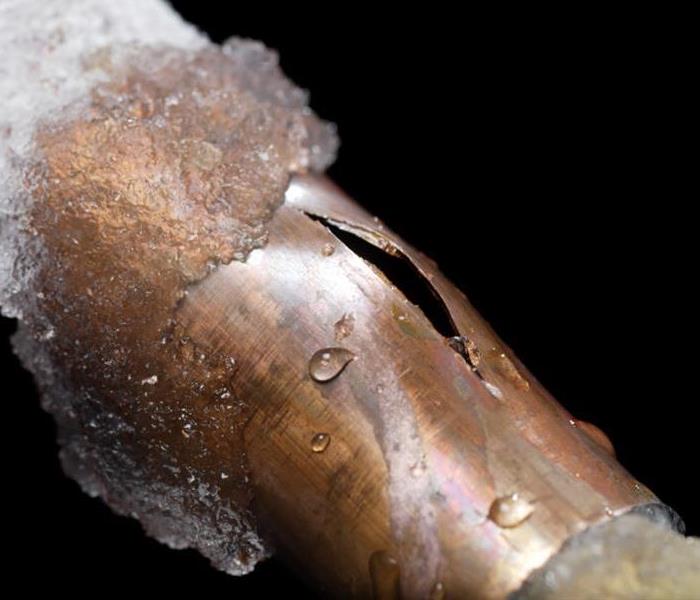 Frozen water pressure burst pipe.
Frozen water pressure burst pipe.
How to Protect Your Pipes in Cold Weather
How to Protect Your Pipes in Cold Weather
Frozen pipes are a tangible risk during winter in the Philadelphia,PA area.When the thermometer dips below 32°F, water begins to expand as it freezes. By taking a few steps now and during winter storms, you can prevent the costly damage caused by frozen and burst pipes. Here are a few tips on how to protect your pipes in cold weather.
Insulate Exposed Pipes
Pipes that are most vulnerable to freezing are exposed to severe cold. These include outside pipes such as water/lawn sprinkler lines or outdoor hose spigots. Unheated areas like crawl spaces, basements, attics, and garages, can also pose a risk to your unprotected water lines. You should insulate all hot or cold-water pipes that run through these areas. You may even want to insulate any exposed hot water pipes inside heated areas of your home to conserve energy and keep the hot water at desired temperature.
Products designed to insulate water pipes include pipe sleeves, heat tape, heat cables, or similar products readily available from your local plumbing and home improvement stores.
Add Insulation to Your House
Having adequate insulation in your attic, basement, crawl spaces, and even your garage can help maintain a higher temperature in your home. As a bonus, your heating usage could be reduced from prior years. (Saving your family money)
Drain Outside Lines
You should have your homes irrigation system drained and blown out before the freezing weather sets in. Follow the manufactures instructions or hire an expert to do this.
Prevent Frozen Pipes
When winter weather has arrived, let water from your cold line drip from faucets that are fed by exposed pipes. Running water is less likely to freeze.
Open cabinet doors in your kitchen and bathrooms to let warmer air reach your plumbing. If you keep cleaning supplies under the sinks, you may wish to relocate them away from the reach of kids.
If your best efforts result in a frozen pipe burst and that frozen pipe bursts damaging your home call the professionals at SERVPRO Whitemarsh/Cheltenham (610)909-6690
"Like it never even happened."





 24/7 Emergency Service
24/7 Emergency Service






















